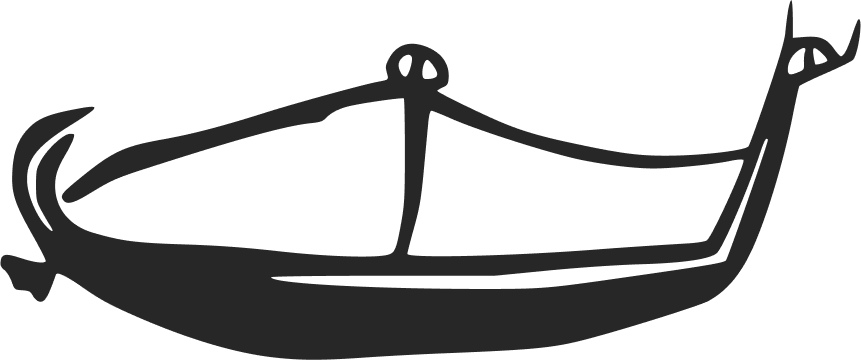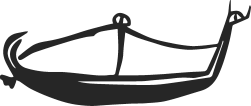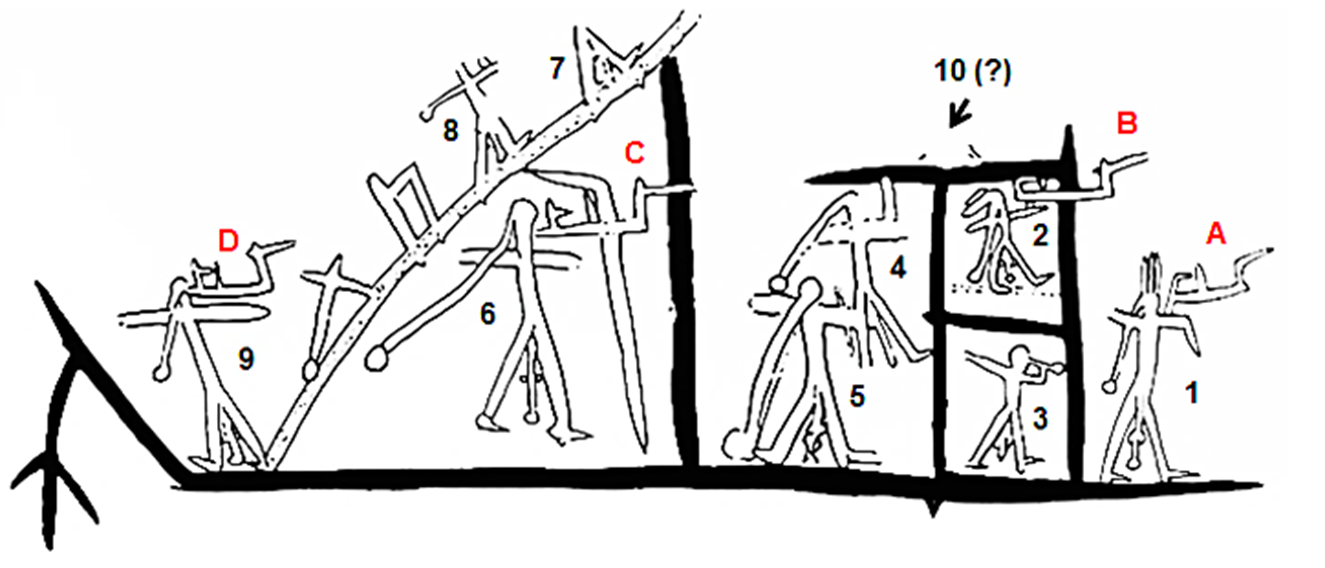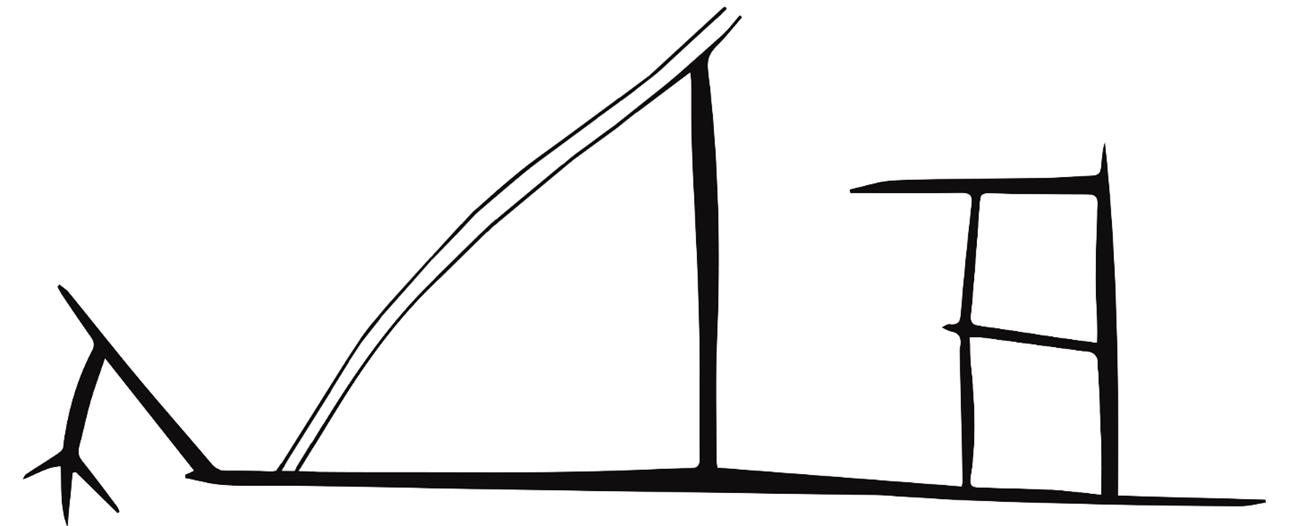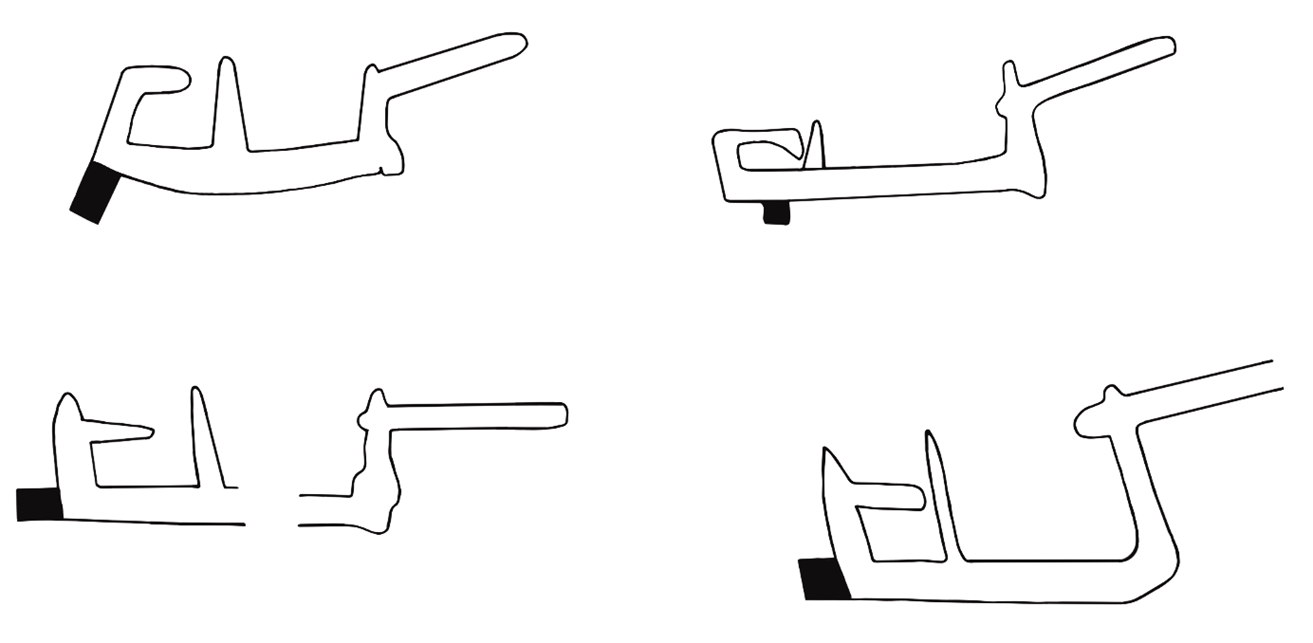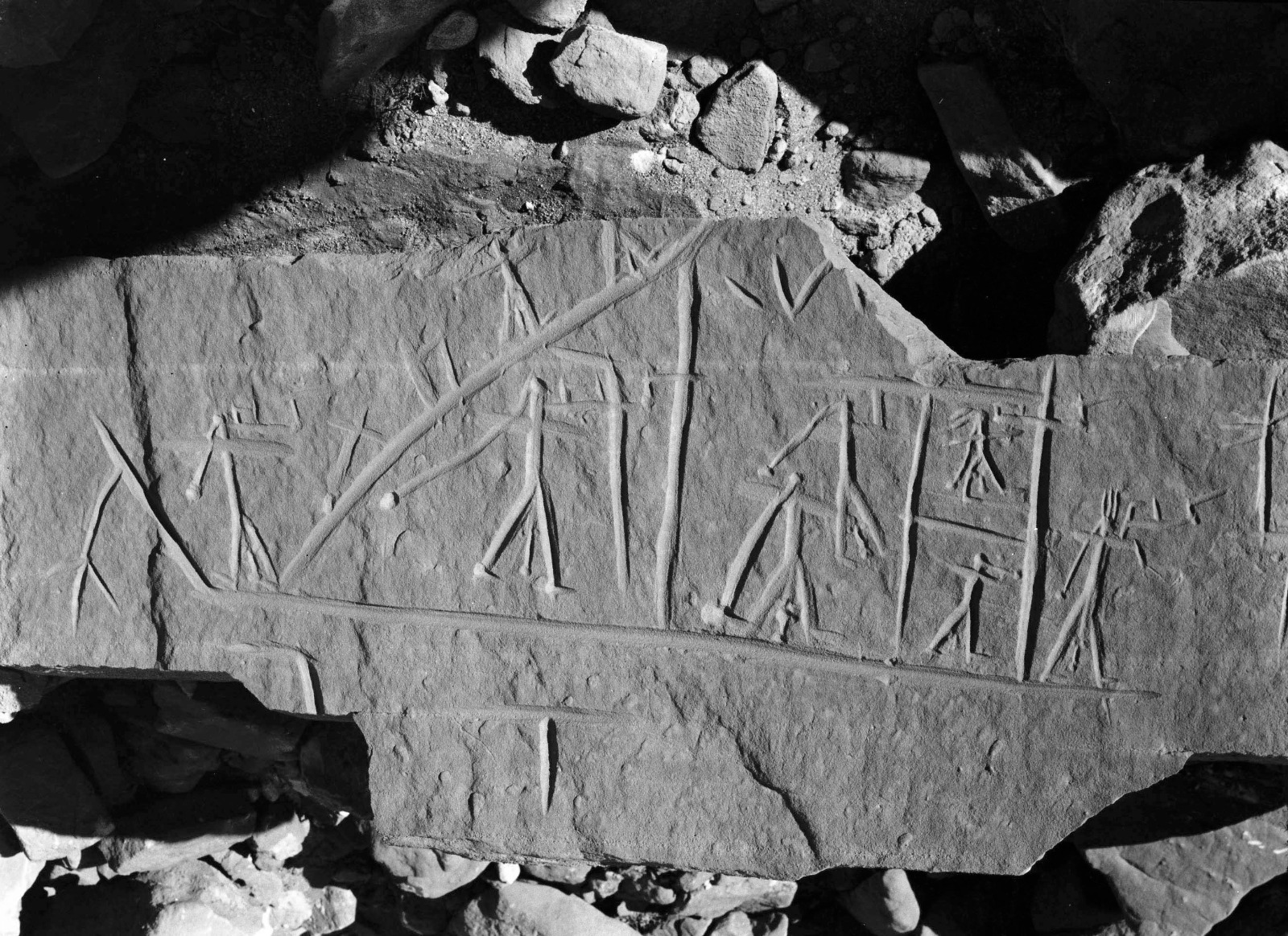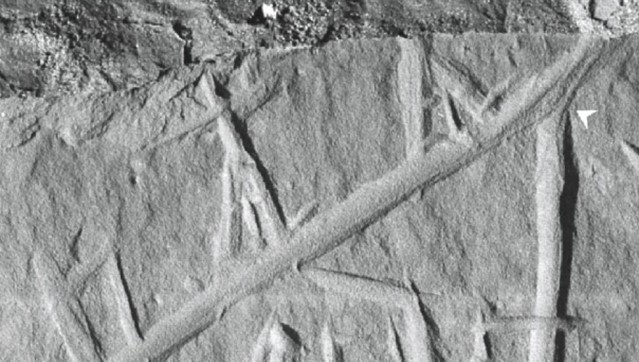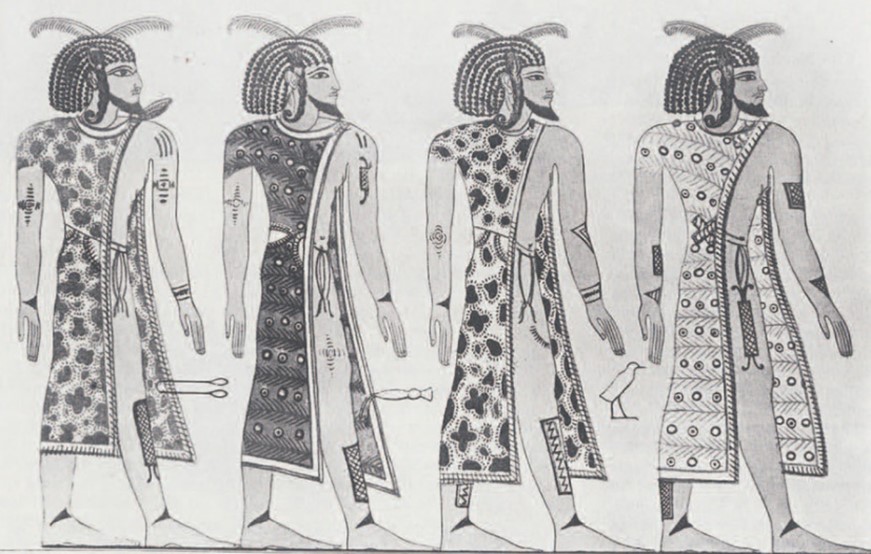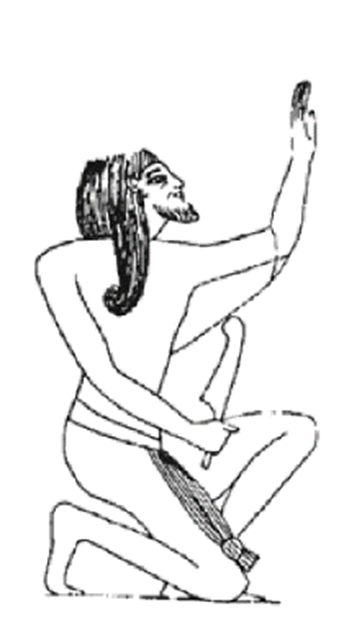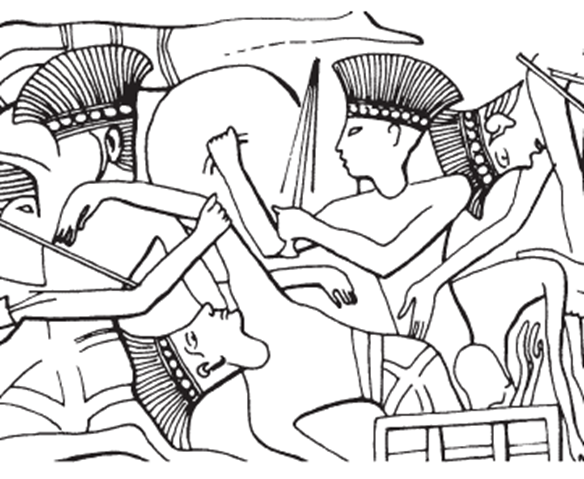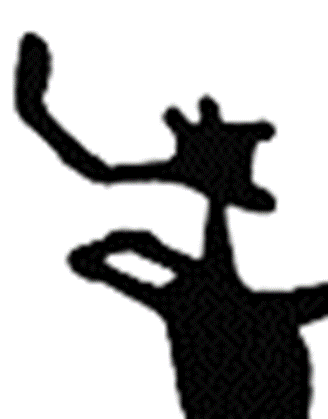I1a; main ship: Ship to the right, with a low flat hull rendered with a single straight line that continues uninterrupted past the stempost into a long bow projection. Vertical stempost with a rectangular forescale divided midway by a horizontal line into two equal parts. The stempost continues above the upper edge of the forecastle at the point where the stone breaks. This indicates that there was probably a device at its extremity which is now missing. The stern is rendered as a straight oblique line that rises at a 129-degree angle. A curving, nearly vertical quarter rudder extends from the sternpost, with two shorter lines on each side to indicate the broadening of the blade. The bottom was not closed off, giving the quarter rudder the appearance of a trident. The mast is amidships. The diagonal line that leads from the stern area to the mast at a 45-degree angle is the only element that poses interpretative difficulty. There are two salient details which may provide hints as to its function. The first is the two figures climbing on it. The second is that it crosses the mast and continues past it all the way to the break of the rock at the top. Looking at the detailed photo of this section, the mast does not appear to continue above it. This gives the sense that the oblique line is supported by or resting on the mast, rather than the other way around. Wachsmann argues based on this observation that the line therefore represents a long solid timber. His evidence for rejecting the possibility of an unstepped mast or rigging however are based on Egyptian parallels, and it is never made clear why these are perceived as applicable to the image. His theory furthermore that the timber represents a large phallus is based on much later Archaic Greek parallels and remains unconvincing. Basch interprets it as either a backstay or a brace, and notes that there are many representations of sailors climbing on the rigging. In this case, the medium would have made a more realistic representation of crouching bodies difficult, making their otherwise impossible stance understandable.
I1b; boat models: these boat models represent a distinctly different type of ship. All four exhibit only very slight variations which can be readily attributed to execution and are clearly meant to depict the same type of vessel. The ships face to the right, with a flat hull and high extremities. The stempost and sternpost are straight and vertical. The stempost is capped by a bird-headed device with an exaggeratedly long beak, while the sternpost bends abruptly at a straight angle at its extremity. There is a mast amidships. Basch provides Cypriot archaic parallels for these ships, but there is no need to use such late examples as there are even better parallels dating towards the end of the LBA. The same stem and stern devices are observable on two ship graffiti from Nahal Oren. The short lines protruding either below the hull (ships A and B) or behind the sternpost (ships C and D) are unlikely to be indicative of an actual feature and are probably just an unintentional result of the incision process. It is difficult to interpret them as steering oars since the ships are otherwise depicted in an identical manner.
